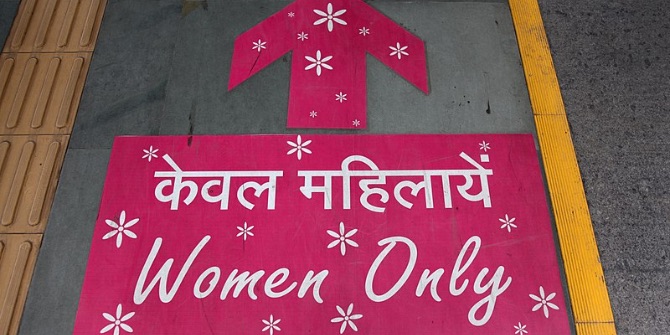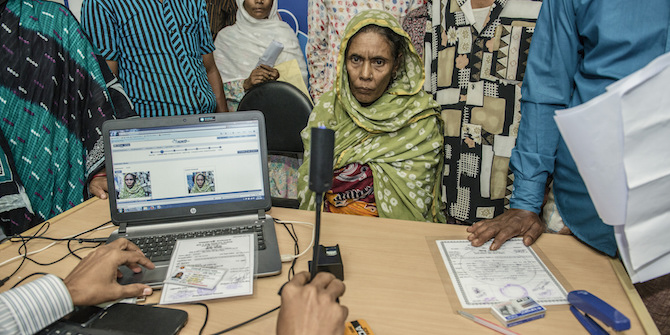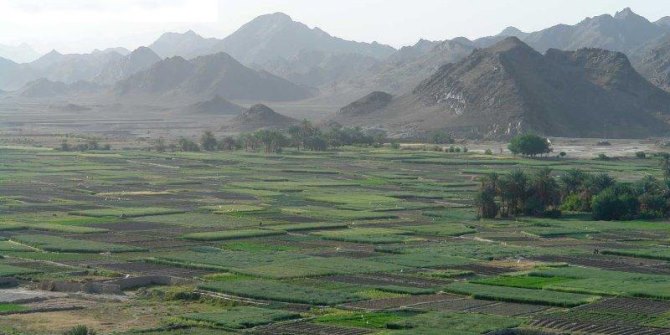Prabha Kotiswaran asks why, in a departure from international anti-trafficking law, India omitted reference to forced labour when criminalising trafficking in the Criminal Law Amendment Act, 2013.
The International Labour Organisation now airs a public service announcement on television channels challenging us to face up to the problem of forced labour, currently affecting 21 million workers around the world. Interestingly, the announcement follows a migrant worker who pays a recruiter to find him a job abroad only to find himself forced to work under constant surveillance by guards. Sounds a bit like what we would today call ‘trafficking’? Indeed.
The UN Office on Drugs and Crime (UNODC) has for several years educated us on ‘human trafficking’, albeit through more dramatic public service announcements focusing on prostitution. What exactly is the relationship between trafficking and forced labour? The short answer is that even experts in the field cannot offer a clear-cut answer.
The ILO claims that forced labour encompasses human trafficking. The ILO Convention No. 29 concerning Forced or Compulsory Labour (1930) defines forced labour as “all work or service which is exacted from any person under the menace of any penalty and for which the said person has not offered himself voluntarily.” Penalty is interpreted as involving a legal or economic sanction or the application of physical or psychological force, but cannot be equated with low wages or poor working conditions, or situations of pure economic necessity with the real or perceived absence of employment alternatives.
The UNODC meanwhile suggests that forced labour is only one type of exploitation covered under the highly ratified UN Protocol to Prevent, Suppress and Punish Trafficking Against Persons, Especially Women and Children supplementing the 2000 United Nations Convention Against Transnational Organised Crime. After all, Article 3(a) of the Protocol defines “trafficking in persons” as the recruitment, transportation, transfer, harbouring or receipt of persons, by use of threat, force, coercion, abduction, fraud, deception, abuse of power or a position of vulnerability or the giving or receiving of benefits for the purpose of exploitation. Exploitation in turn is not defined but is said to include at a minimum, the exploitation of the prostitution of others, sexual exploitation, forced labour, slavery or practices similar to slavery, servitude or the removal of organs.
The varied approaches of the ILO and UNODC to trafficking and forced labour will certainly have distinct regulatory implications at the international level. But what do these approaches mean for developing countries like India with chronic domestic problems of trafficking, forced labour and abysmally poor working conditions?
In the wake of the recent sweeping legal reforms against rape, the Indian Parliament included within the Criminal Law Amendment Act, 2013 (CLA) several new offences to deal with violence against women, including, significantly, trafficking. India has for long sought to criminalise trafficking. Early attempts conceptually conflated trafficking with trafficking for sex work and with sex work itself, evident in the lapsed amendment to the Immoral Traffic Prevention Act, 1956, which was proposed in 2006. The popular understanding of trafficking as encompassing all prostitution is so rampant that even the Justice Verma Committee proposed a trafficking offence, which defined the exploitation element of trafficking in terms of prostitution, irrespective of whether it was undertaken voluntarily or not.
Due to the efforts of the All-India Network of Sex Workers, however, Section 370 of the CLA, which creates the trafficking offence, backs off from this problematic interpretation. Section 370 largely replicates the UN Protocol’s definition of trafficking but interestingly omits reference to forced labour; the offence is now punishable with seven to 10 years’ rigorous imprisonment with a fine. What might explain this extraordinary omission especially when the ILO estimates that of the 20.9 million victims of forced labour the world over, nearly 11.4 million are to be found in the Asia-Pacific region?
There are two possible interpretations for this omission. The first interpretation is that drafters of the CLA perhaps felt that Section 374 of the Indian Penal Code, 1860 (IPC) criminalising unlawful compulsory labour satisfied the Indian Constitution’s prohibition of begar and other forms of forced labour. Moreover, the IPC contains anti-slavery provisions and the Bonded Labour System (Abolition) Act, 1972 outlaws bonded labour. Yet Section 374 only criminalises a person who compels another person to labour against his will, in turn punishable by one year’s imprisonment and/or fine. Thus, the required criminal act and the extent of coercion required are very narrowly drawn (when compared to the broader notion of force) and the punishment offered minimalist.
The second more plausible interpretation is that the drafters of the CLA were deeply familiar with the Indian Supreme Court’s path-breaking and expansive interpretation in the 1980s of ‘forced labour’ under Article 23. At the heyday of the social action litigation movement, the Indian Supreme Court offered an expansive interpretation of the term ‘force’ as going beyond physical or legal force to include ‘any factor which deprives a person of a choice of alternatives and compels him to adopt one particular course of action.’ This would extend to hunger, starvation, and poverty such that he might accept any work that comes his way, even if the remuneration offered to him was less than the minimum wage. As such, the court held that any labour remunerated at a level less than the minimum wage would be considered to be forced labour under Article 23. In another case, the Supreme Court went further to hold that where a forced labourer was located, he was highly likely to have received an advance on his earnings, and that this would therefore raise the presumption that he was a bonded labourer. In response, Parliament amended the bonded labour legislation to treat any contract labourer or inter-state migrant worker, who worked in forced labour as a bonded labourer.
Since then, the Indian state has blatantly refused to enforce existing laws on bonded labour, contract labour and inter-state migrant labour against phenomena that we would characterise as ‘trafficking’. One can then only assume that if the CLA’s anti-trafficking offence had included forced labour within its ambit of exploitation, the Indian state would have been faced the prospect of prosecuting the traffickers of millions of workers who routinely enter into precarious forms of work in India’s rice mills, brick kilns, factories and farms and work for less than the minimum wage.
The Indian state might well believe that labour laws are preferable to the criminal law in addressing forced labour. However, given its prior track record in enforcing labour laws, the omission of forced labour from the ambit of anti-trafficking law suggests that the Indian state has once again missed a significant opportunity to demonstrate its commitment against trafficking. As it is, the CLA criminalises anyone who engages trafficked persons or minors for sexual exploitation, but not the users of trafficked persons in other labour sectors such as domestic work, agriculture, and the construction industry, already predicting the selective enforcement of the CLA and demonstrating the Indian state’s limited political will in combating trafficking.
In 2014, the International Labour Conference will consider adopting a protocol to the ILO’s 1930 Forced Labour Convention to strengthen its fight against trafficking. One can only hope that in the run-up to the 2014 conference India will emulate countries like Brazil in taking a leadership role in combating forced labour and enforce Section 370 and existing labour laws in their true spirit.
Dr Prabha Kotiswaran is Senior Lecturer in Law at King’s College London.








